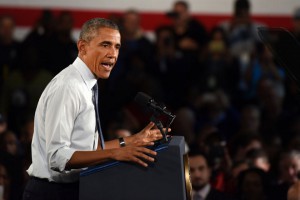By Selina Iglesias
As of this January, Americans could be able to attend two-year colleges without any tuition costs thanks to a plan proposed by President Barack Obama.
Adapted from tuition plans used in colleges in Tennessee and Chicago, Obama’s plan, or “America’s College Promise,” is dedicated to making community college “as free and universal as high school.”
Depending on Congress’ approval, this plan could allow many students to complete the first two years of their bachelor’s degree without any financial setbacks. While tuition will be covered, students will still need to pay for book fees, dorm costs, and other charges.
If passed, this proposal would rely on 75 percent of funds given by Congress, while state funding would take care of the rest of the costs.
Obama’s “College Promise” is predicted by the Obama administration to save students an average of $3,800 in tuition annually and is estimated to cost the government $60,000 dollars in the next ten years.
The plan has yet to be approved in Congress and will not become stable unless the statewide governments provide funding.
If every state participates, the White House estimates that about 9 million students will be given the financial help needed to get an education.
In order to allow the proposal to stay on its feet, state governments would have to commit to making investments towards higher education, reducing the need for repeated and remedial courses, and provide resources to improve affordability at universities while also improving college readiness skills through outreach and early intervention.
So who is eligible?
Unfortunately, students already enrolled in two-year colleges will not benefit from Obama’s proposal.
Upcoming college students with at least a 2.5 grade-point average and a dedication to earning their degree would have to attend college half-time in order to benefit.
While there is a lot of support, many critics argue that the tax dollars are not being utilized correctly, as potential students who need the most aid might not get everything they need to pay for college.
There is also debate on whether or not this proposal could drive away scholarship money from four-year public schools.
Pensacola State students, like many Americans, have mixed feelings on the proposal.
“Most places in the world offer free college, so it’s about time,” student Steven Simpson said. “Congress better approve it, or else the United States will continue to look backwards to the rest of the world.”
Simpson also argues that while taxes may go up, members of the government could take pay cuts to reduce the inflation.
Student Michael Starling disagrees with Obama’s proposal.
“The free college idea sounds like a good idea until we examine it deeper,” Starling said. “The taxes will rise to pay for the college, which is the only way ‘free college’ could be possible.”
Starling believes that the value of education will drop when it becomes more easily available.


